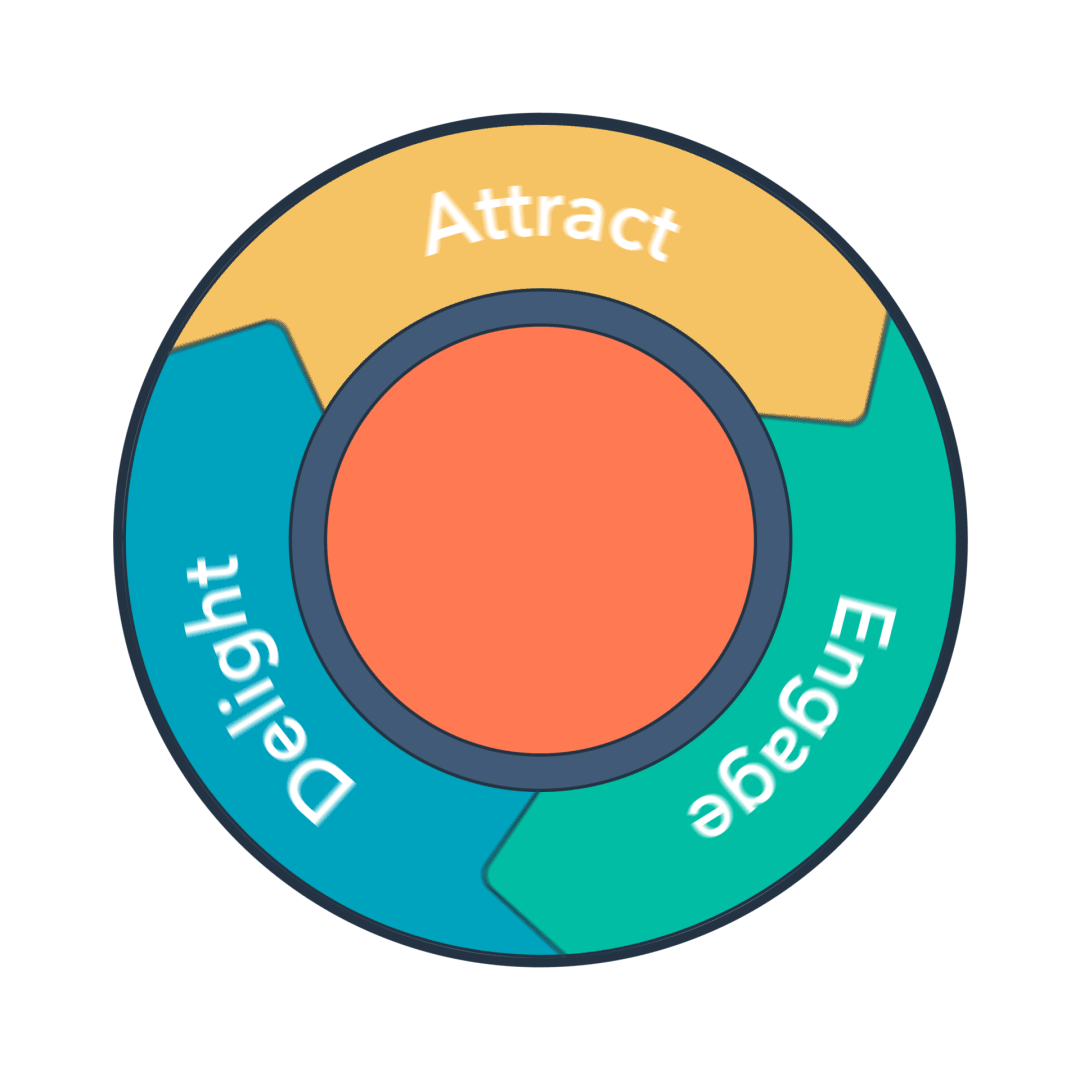Inbound Marketing: Be Delightful!

The term “competitive advantage” has been around a long time but it has meant different things over time. Now that the Internet and social media are an integral part of your marketing strategy the words take on completely new dimensions. Saying that there’s a lot of competition out there for your clients’ attention is, to put it mildly, an understatement. And we all know that. So now, more than ever, it’s important to think carefully—and differently—about just what approach you’re taking to marketing.
Marketing has traditionally been “outbound”—aimed at trying to attract people’s attention through advertising, email lists, and the endless search for leads. In the past decade, however, “inbound” marketing has increasingly proven itself a far better way to reach the clients with whom you really want to connect. Inbound marketing focuses on creating quality content that will draw people to you. You’ve heard it said that social media success is about building relationships? Well, that’s right—and inbound marketing is a big part of that. Because it’s about generating content that resonates with the people who want and need what you have to offer, and it connects them with you naturally and fruitfully.
There’s a process to successful inbound marketing, and it involves mixing up the perfect blend of content, place, and time. 5 major themes characterize this perfect mix. They are:
1. Content Creation—Create high-quality, targeted content that gives your clients the basic information they need about what you offer. Then share that content as widely as you can.
2. Lifecycle Marketing—This means that you acknowledge that clients pass through different stages as they do business with you, and you recognize that each stage requires different marketing actions.
3. Personalization—Remember that each client is different. Make the effort to learn more about your potential clients and leads so that you can tailor your messages to their specific needs.
4. Multichannel focus—Inbound marketing is predicated upon multichannel dissemination. You want to reach your clients where they live and work digitally.
5. Integration—You need your publishing and analytics tools to work together like a well-oiled machine, allowing you to focus on publishing the right content in the right place at the right time.

Putting these themes to work is best visualized in the the form of a flywheel.
Attract
Inbound marketing involves identifying and drawing in your ideal clients. Buyer personas are sketches that give you a sense of what your clients are really like—their goals and challenges, as well as their personal and demographic information. These personas are the people on whom your whole business is built. Some of the most important tools to attract the right users to your site include blogging, social media, the careful use of keywords, and well-built and user-friendly web pages.
Engage
Once you’ve got visitors to your site or social media channel, the next step is to engage with those visitors. Use inbound strategies to engage your audience. To do that ensure you are communicating and dealing with leads and customers in a way that makes them want to build long-term relationships with you. When engaging inject information about the value your business will provide to them but refrain from using a sales pitch. Be helpful and provide information pertinent to their stage along the buyer’s journey.
Additionally, be sure you’re always solution providing rather than product selling and that way you will have more success at turning potential clients into loyal repeat clients. Some of tools you could use to help you engage with prospects include lead flows, email marketing, chat bots, lead management and marketing automation.
Delight
The Inbound way is all about providing remarkable content to all users. Inbound marketers continue to engage with, delight, and (hopefully) upsell their current customer base into happy promoters of the companies and products they love. Tools of this delight include smart calls-to-action (presenting users with offers keyed to buyer persona and lifecycle stage), social media, and email, attribution reporting and marketing automation.
Inbound marketing doesn’t just happen; you execute it. And you do it using tools and applications that help you create and deliver content that will appeal to precisely the right people (your buyer personas) in the right places (channels) at just the right times (lifecycle stages).
